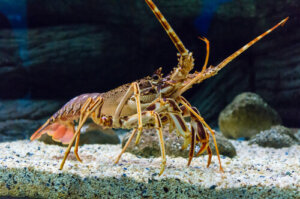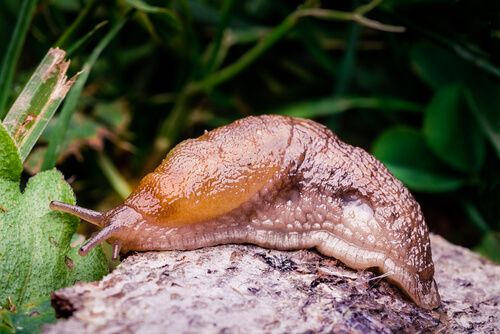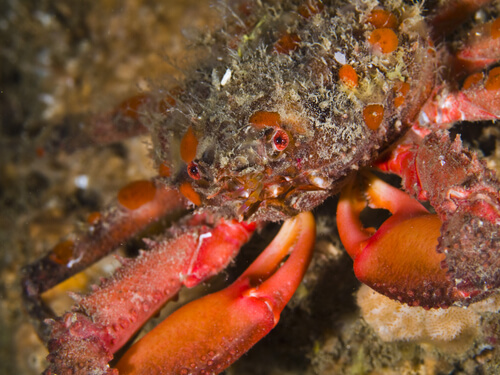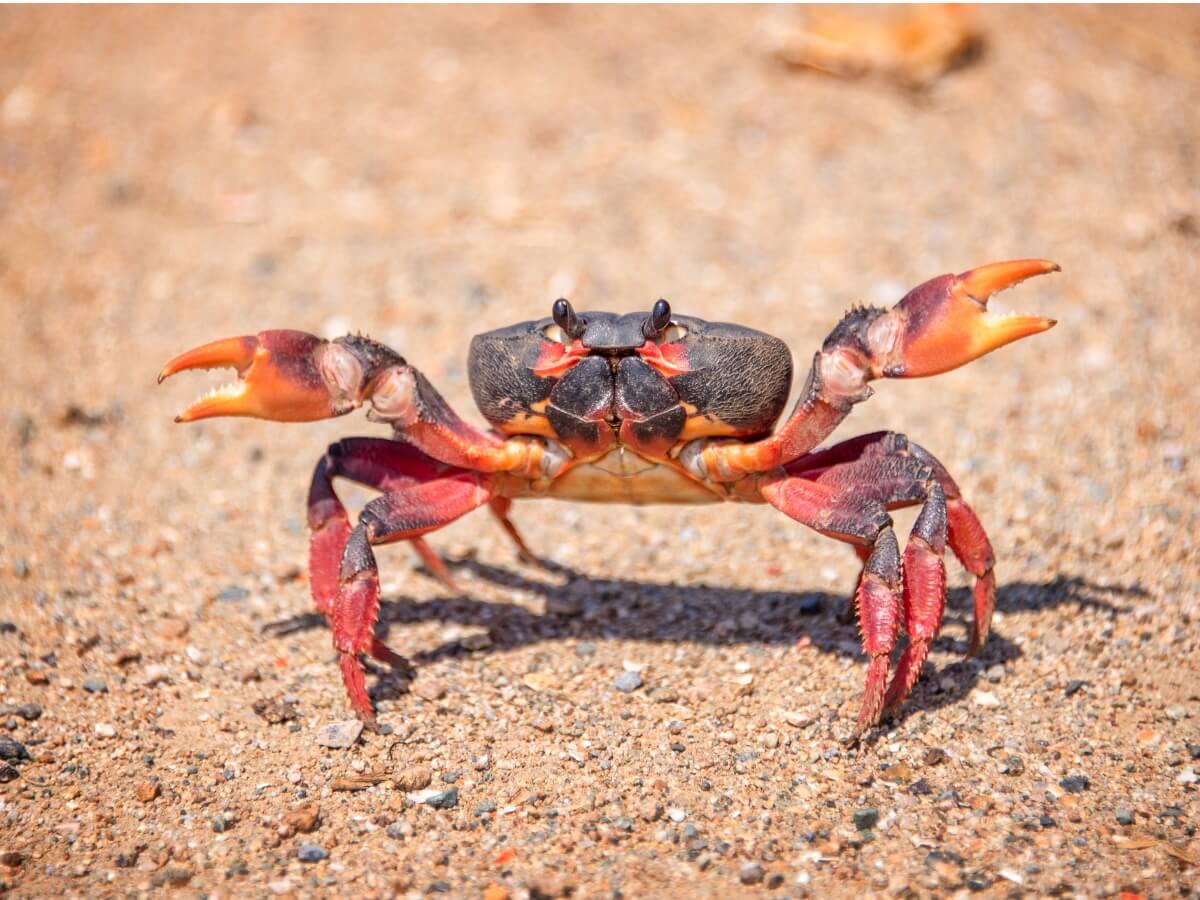10 Differences Between Crustaceans and Mollusks

We often don’t know how to tell the differences between crustaceans and mollusks. So, in this article, we’re going to tell you all about each family!
What are the main differences between crustaceans and mollusks?
Both are invertebrates and most of them live in water – these are common to both taxonomic groups. We can also point out that they’re used in local gastronomy and are grouped within the ‘shellfish’ category, although there are quite noticeable differences between crustaceans and mollusks. We’ll show you them below.
1. They’re different taxonomic groups
First of all, we need to look for information in the genes of each group to establish that they are indeed different living beings. All mollusks belong to the phylum Mollusca, one of the “highest” categories as far as the tree of life is concerned. It’s estimated that there are about 85,000 species (or many more) grouped in this taxon.
Crustaceans, on the other hand, belong to the phylum Arthropoda and to the subphylum Crustacea. This means that their classification is somewhat less broad than that of mollusks from a strictly phylogenetic point of view. It’s estimated that about 45 000 species exist today.
2. All crustaceans have an external skeleton
The exoskeleton of crustaceans is one of their main characteristics; their bodies are ‘wrapped’ with a kind of hard shell that protects them as they molt as they grow. Mollusks, on the other hand, have a soft body, and one of the best known examples is the snail, which has a different form of protection, its shell.
Although the shells of some mollusks are external and are considered exoskeletons at a functional level, other specimens have these internalized structures as calcium deposits and lack a protective layer of any kind. Cuttlefish are a clear example of this.
3. Mollusks have a “foot”
This organ is exclusive to mollusks and has evolved over time. The foot is endowed with a powerful and complex musculature that allows them to swim, move, and also hunt. For example, slugs have a very powerful foot that secretes mucus, which allows hydration and locomotion.
Crustaceans, on the other hand, have several pairs of well-differentiated legs with which they move from one side to the other. Many of them are decapods, i.e., they have 10 legs in their entire body.

4. Crustaceans have separate sexes
Reproduction is another ideal biological feature to identify the differences between crustaceans and mollusks. Although both do so through eggs (they’re oviparous), crustaceans in general have dioecious procreation, which means that a male and a female are needed to continue the species.
In the case of mollusks, many of them are hermaphrodites -such as slugs- and can, therefore, produce eggs or spermatozoa as needed. However, two individuals are essential for reproduction.
There are always exceptions to this rule, as there are hermaphroditic crustaceans and dioecious mollusks. However, it’s estimated that up to 40 % of the mollusc genera exhibit sequential hermaphroditism.
5. Mollusks have a toothed structure
The radula of mollusks is a kind of “tongue” with small teeth and muscles that can protrude from the mouth and act as a scraper for rocks or stones. These scraping structures are composed of chitin.
In the case of crustaceans, it’s somewhat different, as they’re jawed arthropods with different parts specialized in the trophic strategy of each species. They lack a radula in all cases.
6. Crustaceans are made up of three parts
The division of the bodies is another difference between crustaceans and mollusks. Crustaceans have three regions: the head, thorax, and abdomen, which are very well differentiated. Mollusks don’t have such a clearly segmented body and some may be protected by a shell.
Even so, the body of mollusks can also be divided into sections. These are usually the head, the foot and the visceral mass.

7. Mollusks are either marine or terrestrial
Although most mollusk species live in the sea (clams, oysters, squids, and octopi), there’s also another large group (including snails and slugs) whose habitat is terrestrial. We’re referring here to gastropods, about 75,000 living species among which there are several that live only on land.
As for crustaceans, all are aquatic except for the damp woodlice, also known as isopods (order Isopoda, suborder Oniscidea). There are more than 3700 species of isopods distributed throughout the world, although they represent the minority within this taxonomic group.
These isopods, or damp woodlice, are terrestrial, but live in very damp and dark environments.
8. Crustaceans have gills on their thorax
Both groups of animals breathe in the same way: through gills. The difference lies in the location of the gills in the body. In the case of crustaceans, the vascularized tissues that act as ‘lungs’ can be found in the thorax, while in mollusks they’re located in the paleal cavity at the back of the body.
Again, there are other exceptions to this rule. It’s possible to have pulmonate mollusks, such as certain land snails. On the other hand, practically all crustaceans exercise gill respiration.
9. Mollusks feed on microorganisms
Feeding will depend on the species to which each specimen belongs, although there are two distinct classes in mollusks. On the one hand, we have the filter feeders, which feed on microorganisms floating in the water, and on the other hand we have the branch feeders, which scrape the rocks with the radula. Most can also ingest carrion.
Crustaceans also feed on microorganisms, but most choose dead animals, minor invertebrates, and small fish as their main food sources.
It should be noted that the digestive system of mollusks is more or less as complex as that of crustaceans, since both have a gastric tube, esophagus, stomach, intestine, and anus, which are all very well developed (in general). However, lamellibranch and bivalve mollusks have a somewhat different conformation.
10. Different larval stages
As in the other points, the life cycle of each crustacean or mollusk depends on the species. However, it can be generalized that the larval stage of crustaceans is the nauplius, while that of mollusks is known as the trochophore larva.

As you can see, there are many differences between crustaceans and mollusks. Crustaceans are segmented invertebrates with a hard exoskeleton and a well-differentiated body plan, while mollusks have exposed soft parts and their body is more diffuse as far as anatomical limits are concerned. However, we’re sure that you’ve seen that both animals are extremely interesting!
All cited sources were thoroughly reviewed by our team to ensure their quality, reliability, currency, and validity. The bibliography of this article was considered reliable and of academic or scientific accuracy.
- Sepia officinalis, ADW. Recogido a 5 de noviembre en https://animaldiversity.org/accounts/Sepia_officinalis/
This text is provided for informational purposes only and does not replace consultation with a professional. If in doubt, consult your specialist.